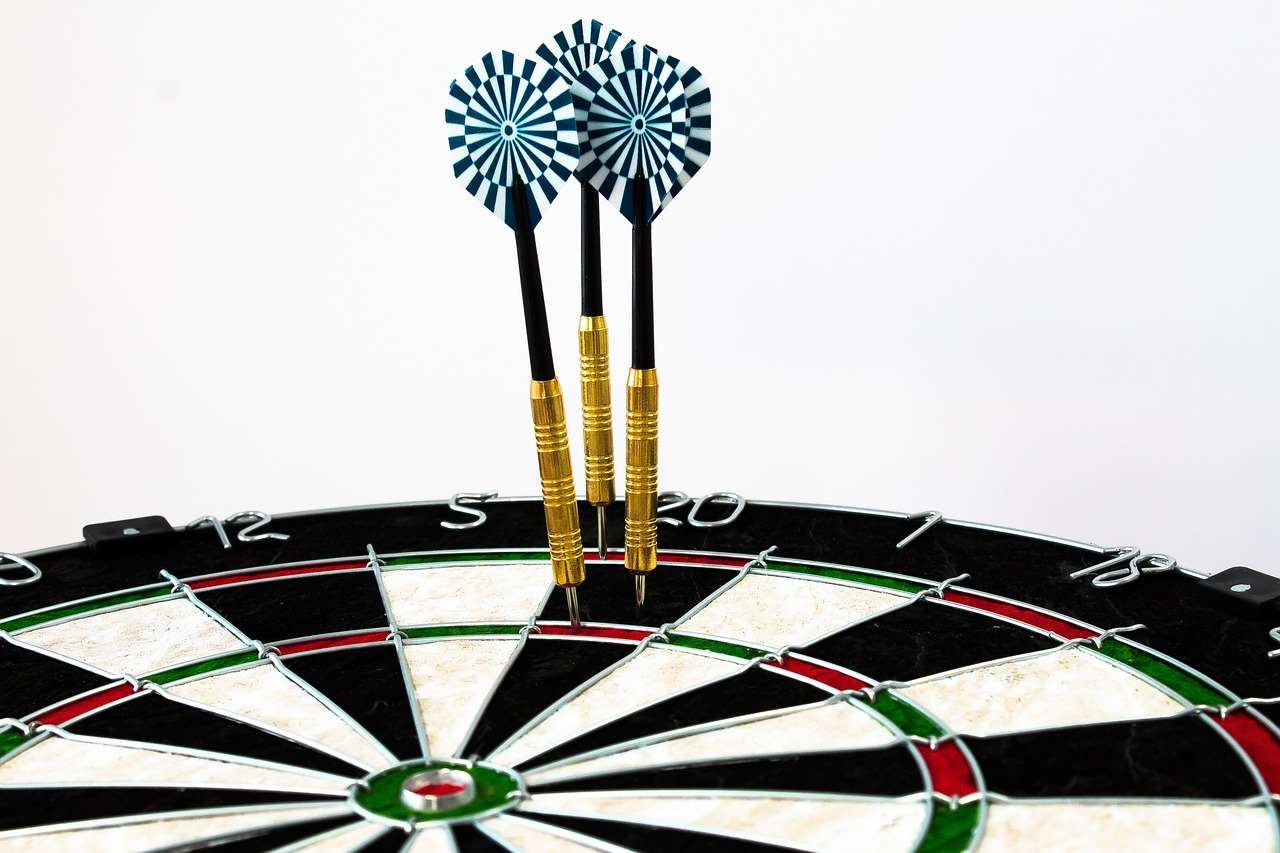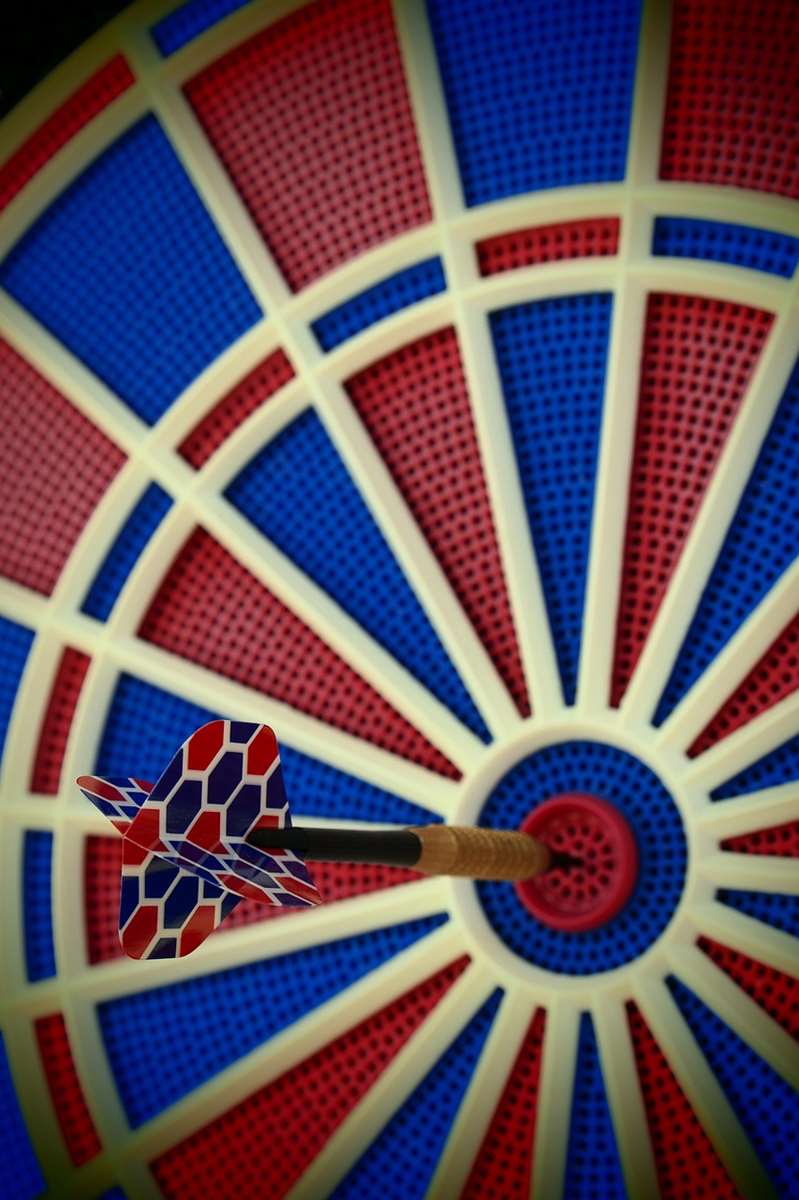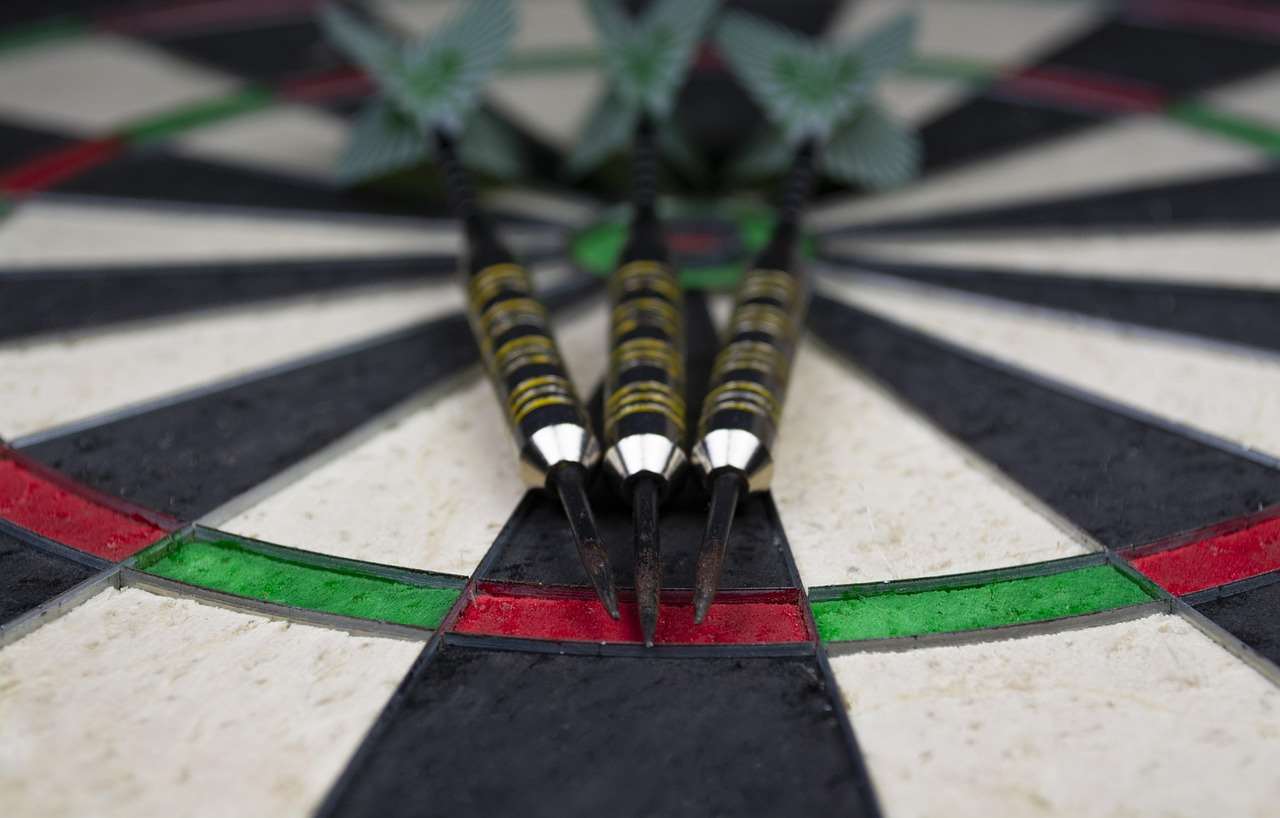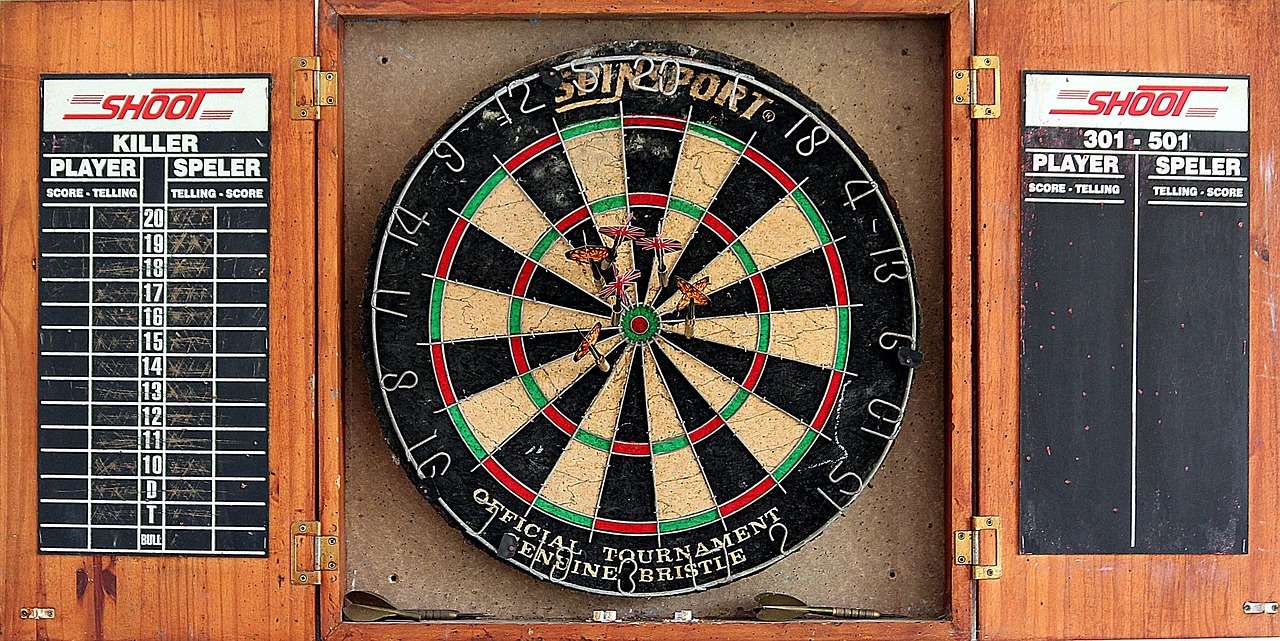Understanding the psychology of Cricket darts strategy is crucial for success, as it’s not just about throwing accurately, but also about mastering the mental game to outmaneuver your opponent. This article explores the psychological elements that influence performance in Cricket darts, from pre-match preparation to in-game decision-making, and provides practical strategies for improving your mental fortitude at the oche.
⚠️ Still Using Pen & Paper (or a Chalkboard)?! ⚠️
Step into the future! The Dart Counter App handles all the scoring, suggests checkouts, and tracks your stats automatically. It's easier than you think!
Try the Smart Dart Counter App FREE!Ready for an upgrade? Click above!
The Mental Fortress: The Psychology of Cricket Darts Strategy
Cricket darts demands more than just hitting triples. Strategic thinking and a robust mental game are essential components for victory. The best Cricket players understand that the psychology of Cricket darts strategy involves anticipating opponents’ moves, managing pressure, and maintaining focus throughout a potentially long and arduous match.

Pre-Match Preparation: Setting the Stage for Success
Before even approaching the oche, psychological preparation is paramount. This includes:
- Visualization: Mentally rehearsing successful throws and strategies. Imagine yourself hitting key numbers and closing out the game.
- Goal Setting: Establishing clear, achievable goals for the match. This could be anything from hitting a certain number of triples to successfully implementing a specific tactical approach.
- Relaxation Techniques: Employing techniques such as deep breathing or meditation to calm nerves and reduce pre-match anxiety.
Think of it as building a mental fortress. By taking these steps, you’re laying a strong foundation for your performance, allowing you to approach the game with confidence and a clear head. Mastering Basic Darts Fundamentals for Beginners provides a solid base, but mental preparation elevates your game.
Strategic Thinking: Decoding Your Opponent and Planning Your Attack
Cricket is a game of numbers and strategic closures. Understanding your opponent’s tendencies and adapting your game plan accordingly is a key element of the psychology of Cricket darts strategy. This involves:
- Identifying Weaknesses: Observing your opponent’s preferred targets and identifying any numbers they struggle with.
- Blocking Strategy: Strategically marking numbers that your opponent needs to close out, forcing them into uncomfortable positions.
- Aggressive vs. Defensive Play: Knowing when to attack and when to defend based on your opponent’s score and the remaining numbers on the board.
For example, if your opponent consistently struggles with the 19s, you might choose to focus on marking that number early, putting them under pressure. This requires careful observation and calculated decision-making throughout the match. Furthermore, thinking through your strategy in advance can help you adapt if you need to modify the Adapting darts rules for beginners to fit your particular skill set.

Managing Pressure: Staying Calm Under Fire
The pressure in a Cricket match can be immense, especially when closing out a game or facing a critical shot. Controlling your emotions and maintaining focus is crucial. Strategies for managing pressure include:
- Focusing on the Process: Concentrating on your throwing technique and pre-shot routine, rather than the outcome of the throw.
- Positive Self-Talk: Replacing negative thoughts with positive affirmations. Believe in your ability to execute the shot.
- Breathing Techniques: Using deep, controlled breathing to calm your nerves and regain composure.
Remember, even the best players experience pressure. The key is to develop strategies for managing it effectively, allowing you to perform at your best when it matters most.
The Psychology of Blocking: Disrupting Your Opponent’s Game
A crucial aspect of Cricket strategy involves **psychological blocking**. This goes beyond simply marking numbers; it’s about disrupting your opponent’s rhythm and creating mental roadblocks. For example:
- Choosing Unexpected Numbers: Instead of going for the obvious targets, select less common numbers to confuse your opponent and force them to adjust their strategy.
- Varying Your Pace: Altering your throwing speed and routine can disrupt your opponent’s rhythm and throw them off balance.
- Mind Games (Subtle): While avoiding blatant cheating or unsportsmanlike conduct, subtle psychological tactics, like maintaining eye contact or strategically pausing before throwing, can sometimes create a slight mental edge. However, ethical gameplay should always be prioritized.

This aspect of the psychology of Cricket darts strategy can be incredibly effective, but it requires a delicate balance. The goal is to gain a psychological advantage without crossing the line into unethical or distracting behavior. Many beginners will find value in playing Simplified 501 game rules for novice players to grow more accustomed to the pressure of the game.
Building Confidence: The Power of Belief
Confidence is a cornerstone of success in any sport, and darts is no exception. Believing in your abilities can significantly impact your performance. Strategies for building confidence include:
- Positive Reinforcement: Focusing on your strengths and celebrating your successes, no matter how small.
- Learning from Mistakes: Viewing mistakes as opportunities for growth, rather than dwelling on them.
- Surrounding Yourself with Positivity: Associating with supportive friends, family, or teammates who believe in you.
Remember, confidence is contagious. When you believe in yourself, you’re more likely to perform at your best and inspire confidence in others. Even when exploring Fun dart game variations with modified rules, maintaining your confidence will improve your gameplay experience.
Adapting to Your Opponent’s Mental State
A keen understanding of the psychology of Cricket darts strategy also involves reading your opponent’s mental state. Are they frustrated? Are they confident? Adapting your strategy based on their demeanor can provide a significant advantage. For example:
- Capitalizing on Frustration: If your opponent is visibly frustrated, maintain your composure and continue to apply pressure. They may be more likely to make mistakes.
- Respecting Confidence: If your opponent is playing with exceptional confidence, avoid becoming intimidated. Focus on your own game and execute your strategy to the best of your ability.

This requires a high level of awareness and emotional intelligence, but it can be a powerful tool for turning the tide of a match.
The Importance of Mental Resilience: Bouncing Back from Setbacks
In Cricket darts, setbacks are inevitable. You will miss shots, your opponent will make unexpected comebacks, and you will face moments of intense pressure. The ability to bounce back from these setbacks is crucial for long-term success. Mental resilience involves:
- Acceptance: Acknowledging that setbacks are a normal part of the game and avoiding dwelling on them.
- Positive Reframing: Viewing setbacks as opportunities for learning and growth.
- Persistence: Maintaining your focus and determination, even in the face of adversity.
Think of yourself as a rubber band. The more you stretch and test your mental resilience, the stronger you become. When learning How to make darts fairer with handicap rules, remember that both winning and losing have valuable lessons.

Post-Match Analysis: Learning and Growing
The psychology of Cricket darts strategy doesn’t end when the match is over. Taking time to analyze your performance, both mentally and physically, is essential for continuous improvement. This includes:
- Identifying Strengths and Weaknesses: Evaluating what you did well and what areas need improvement.
- Reflecting on Your Mental State: Analyzing how you managed pressure, handled setbacks, and maintained focus throughout the match.
- Adjusting Your Strategy: Modifying your game plan based on your observations and insights.
By embracing a growth mindset and continuously learning from your experiences, you can unlock your full potential in Cricket darts.
Conclusion: Mastering the Mind Game
Ultimately, the psychology of Cricket darts strategy is about mastering the mental game to complement your physical skills. By focusing on pre-match preparation, strategic thinking, pressure management, confidence building, and mental resilience, you can significantly enhance your performance and increase your chances of success. So, the next time you step up to the oche, remember that your mind is just as important as your aim. Now that you understand the psychology of Cricket darts strategy, put these principles into practice and elevate your game! Consider joining a local darts league to test and refine your mental game in a competitive environment.
Hi, I’m Dieter, and I created Dartcounter (Dartcounterapp.com). My motivation wasn’t being a darts expert – quite the opposite! When I first started playing, I loved the game but found keeping accurate scores and tracking stats difficult and distracting.
I figured I couldn’t be the only one struggling with this. So, I decided to build a solution: an easy-to-use application that everyone, no matter their experience level, could use to manage scoring effortlessly.
My goal for Dartcounter was simple: let the app handle the numbers – the scoring, the averages, the stats, even checkout suggestions – so players could focus purely on their throw and enjoying the game. It began as a way to solve my own beginner’s problem, and I’m thrilled it has grown into a helpful tool for the wider darts community.